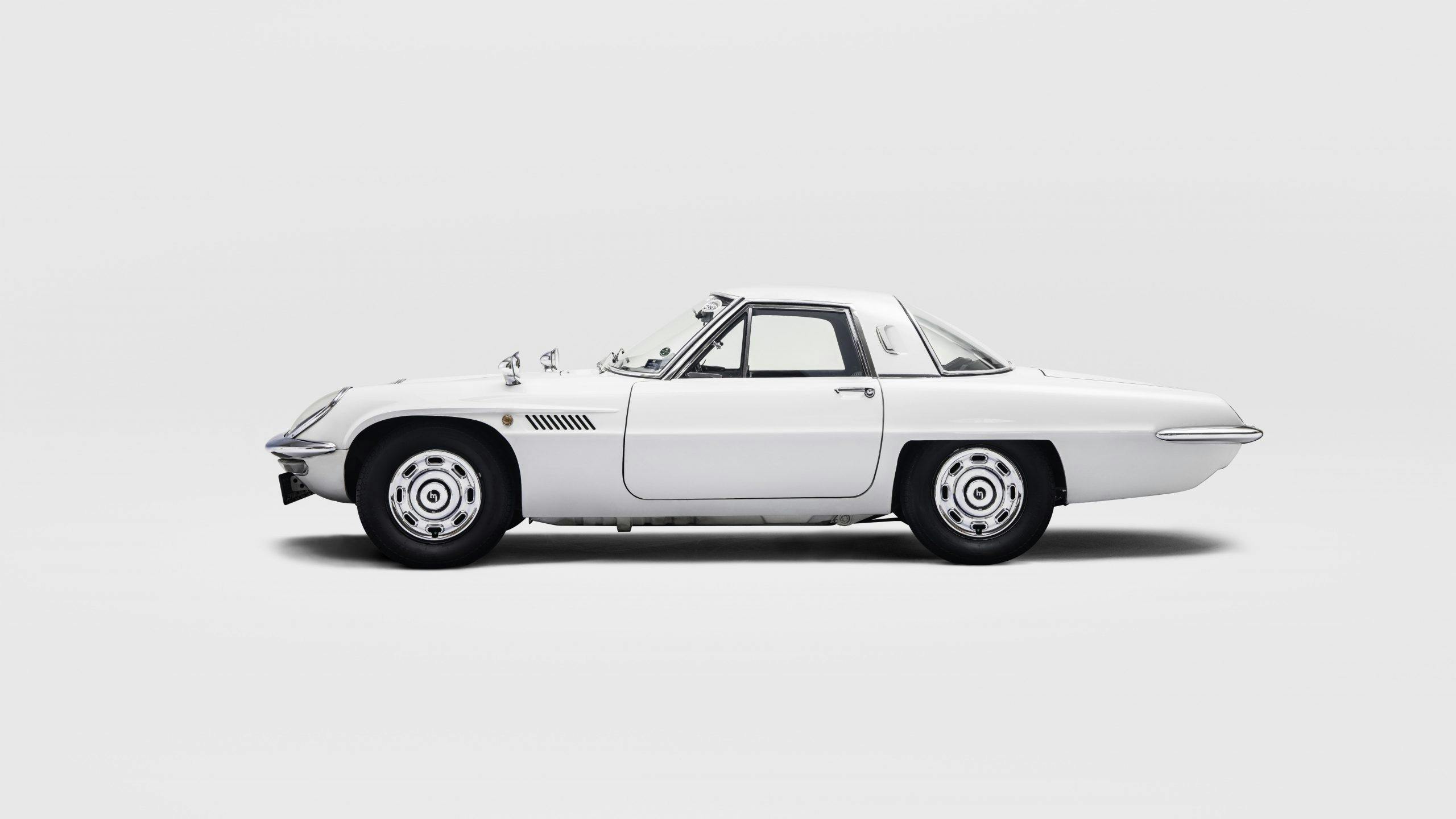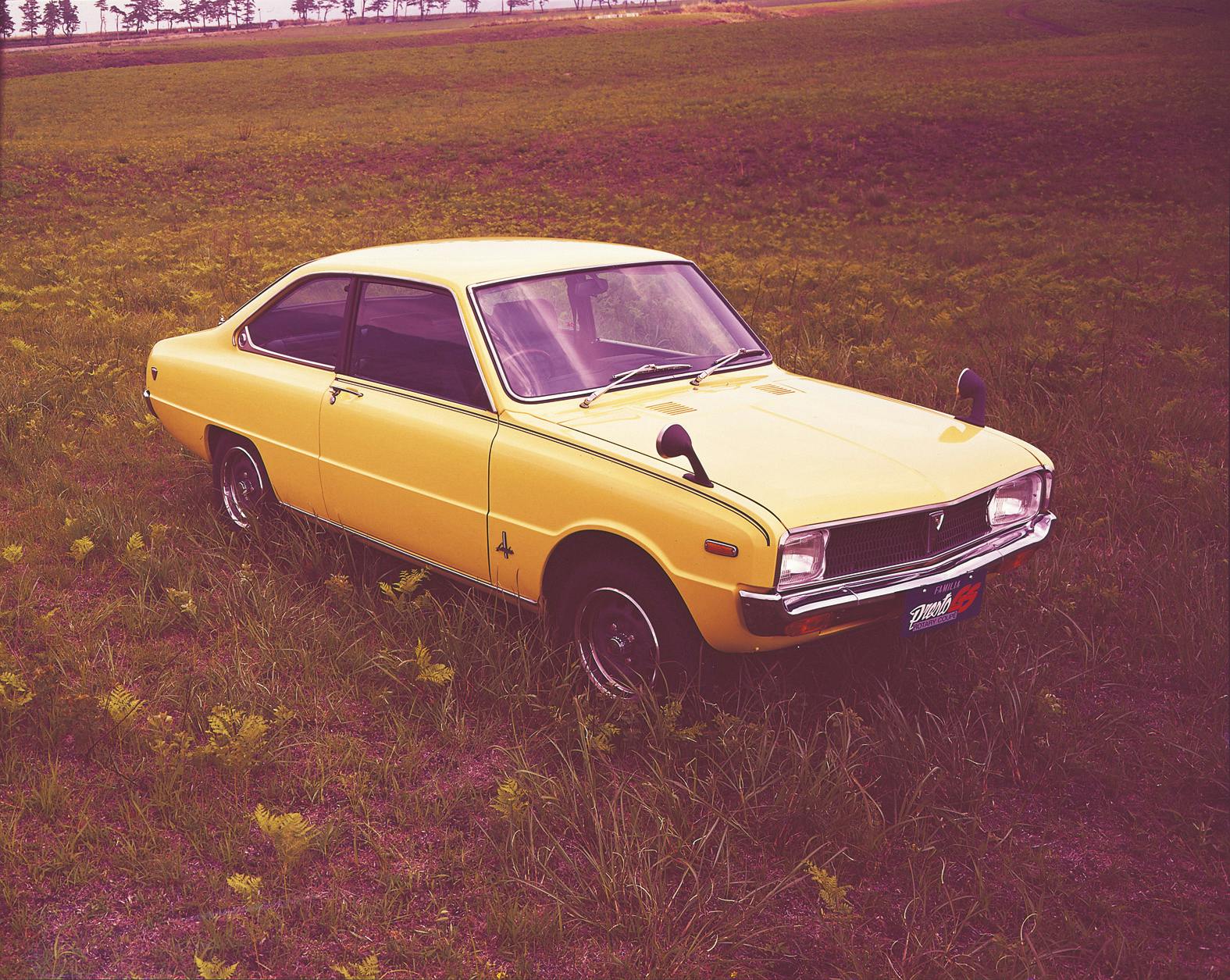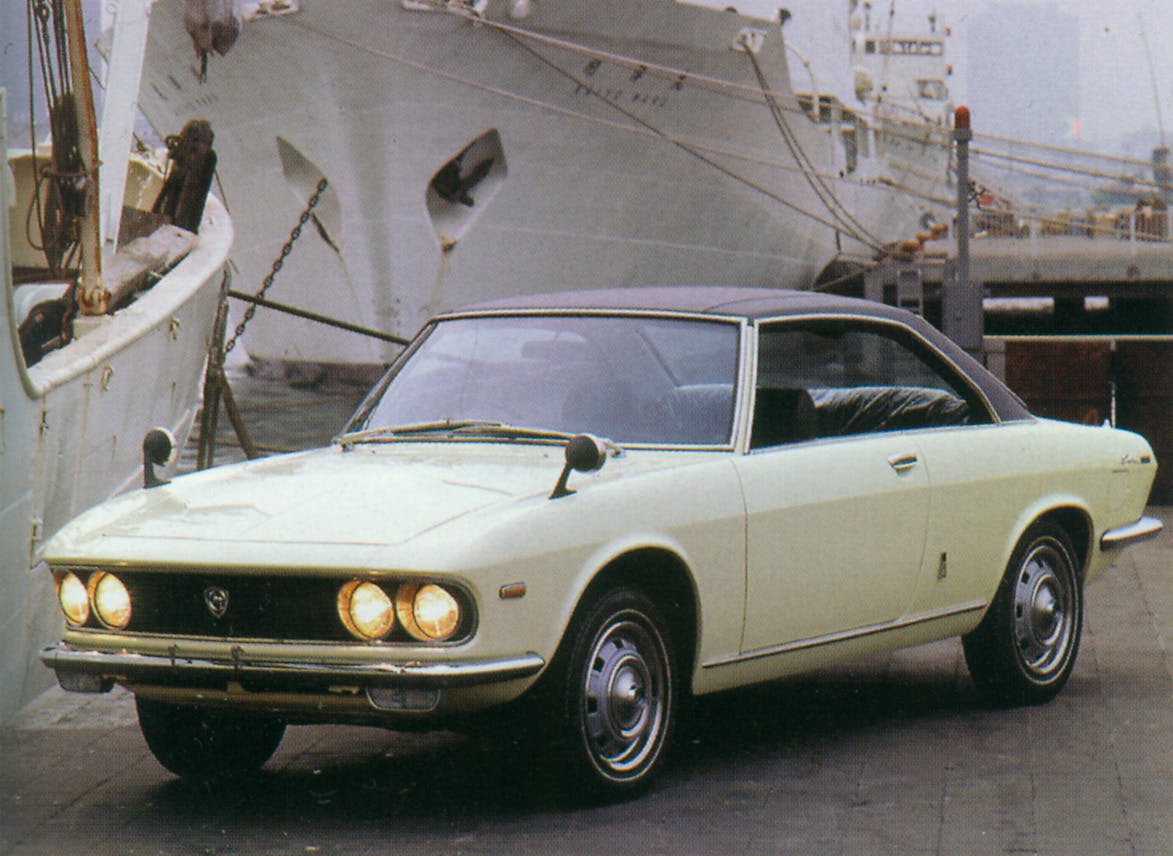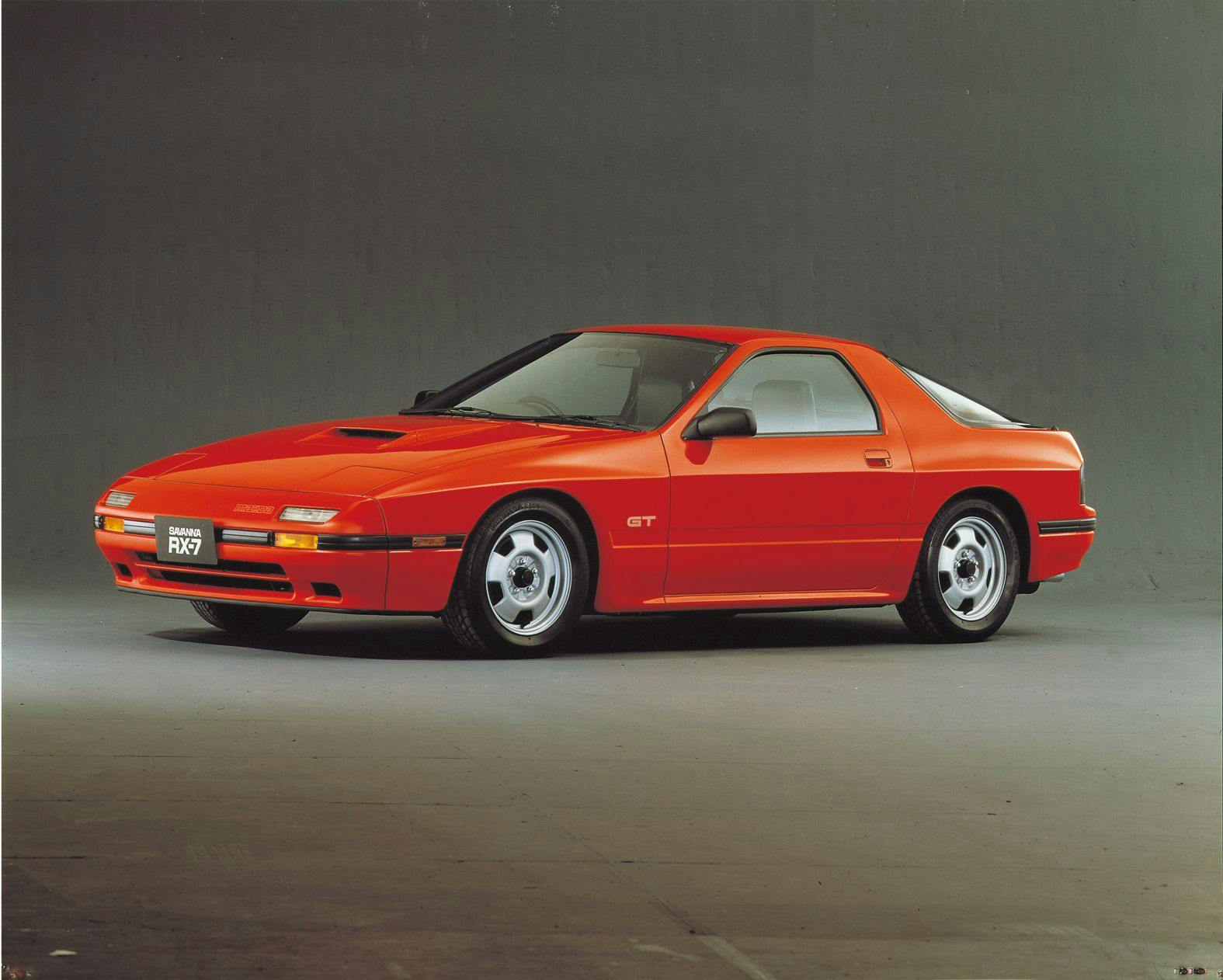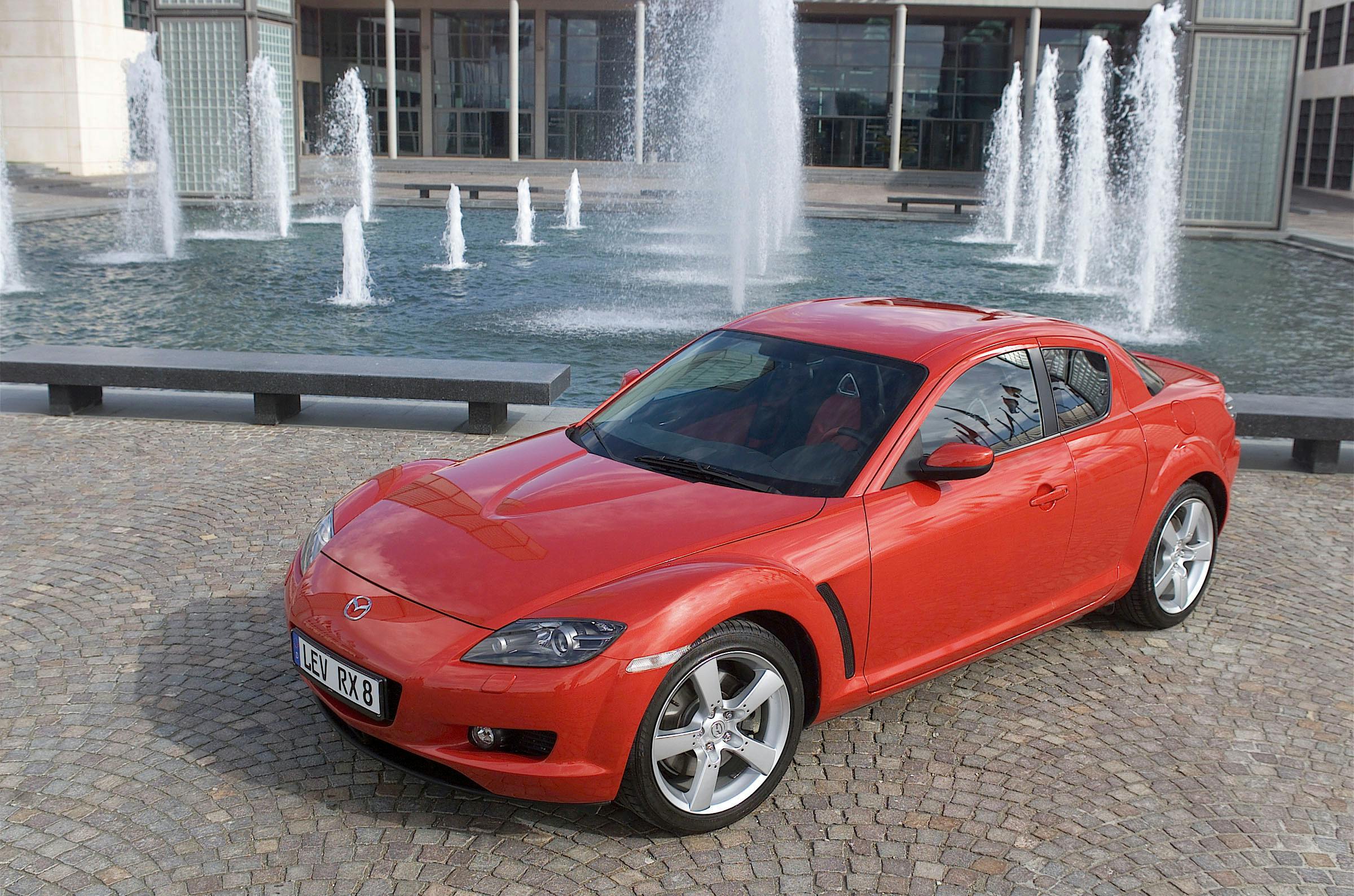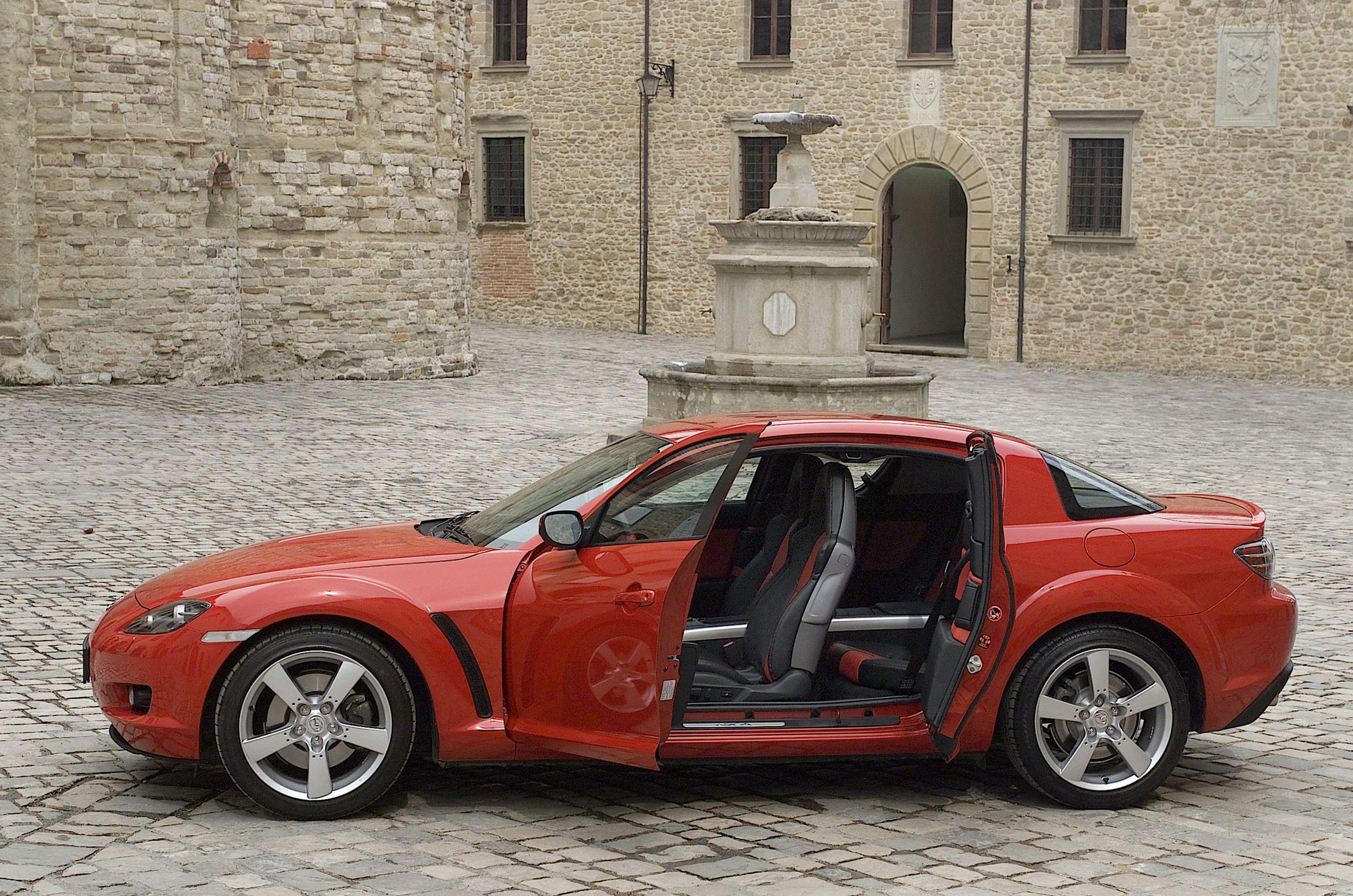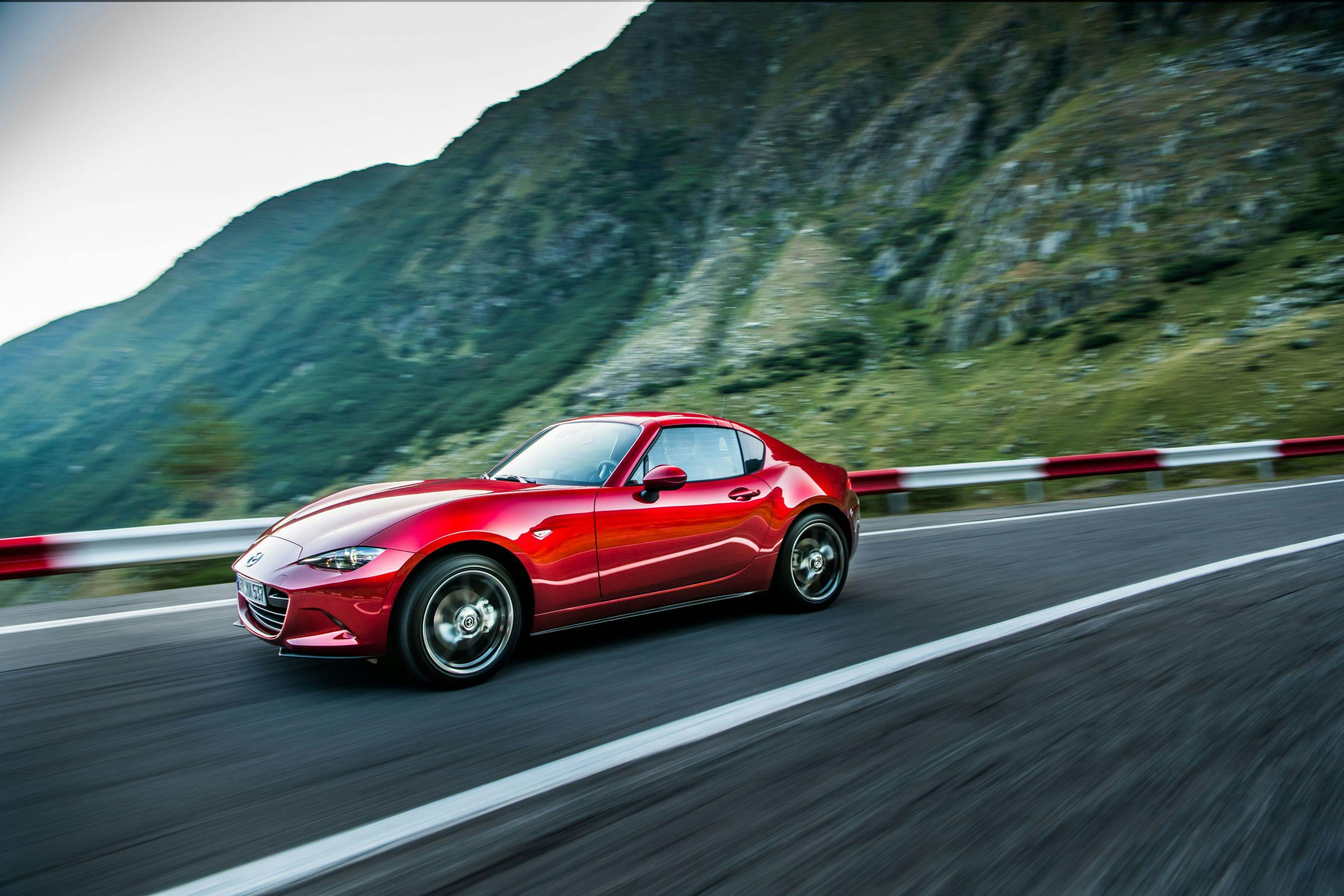Media | Articles
Pick your all-time favorite Mazda coupe from these factory photos
People going to sleep with a hardcover edition of Encyclopædia Britannica tucked under their pillow—or, perhaps, journalists who simply ate too much shrimp at a BMW Gran Coupe event—will tell you that a coupe can have any number of doors as long as the roofline says you’re looking at a sportier and lighter motorcar. I’m a member of the two-doors-only club, however, one that welcomes all the Mazdas you’re about to see.
From R360s through Cosmos, RX-7s, and plenty of Japanese-market luxury, we arrive at the current MX-5 Miata RF, a folding hardtop holding the line until Mazda’s new turbo straight-six can find its way into the nose of something that’s similarly rear-wheel drive yet also larger and much faster.
Early two-doors like Mazda’s first, the R360, weren’t meant to urge you to a race but to minimize manufacturing costs and make stepping in and out of these microcars easier. However, its coupe body style certainly made the 9.7-foot-long R360 fashionable and also earned it the title of the lightest vehicle in its class. In fact, Mazda’s first coupe was such a hit that, in 1960, it captured 65 percent of Japan’s kei car segment, which meant 15 percent of new cars sold in Japan in 1960 were Mazdas. The company kept the momentum going by launching the slightly longer-wheelbase Carol P360 coupe for 1962, which came with a four-cylinder engine instead of a V-twin.
1965 meant it was time for the Familia Coupe, which was a Bertone by Giorgetto Giugiaro design that was also available as a sedan, a three-door wagon, or a two-door pickup.
Marketplace
Buy and sell classics with confidence

1967 changed everything for Mazda, because that’s when the rotary-powered Cosmo was launched, and as the brand’s flagship, it couldn’t be anything but a coupe.
Initially with 110 and then 130 hp from its twin-rotor, 982-cc Wankel engine, the Cosmo went through four generations and remained Mazda’s halo product until 1996.
Keeping in mind those with a sub-Cosmo budget, Mazda introduced the Familia Rotary model range in 1968, offering this small car both in coupe and sedan body styles. R100s were also one of the first Mazdas sold in the United States, introduced for model years 1971 and ’72.
Another, more expensive Giorgetto Giugiaro-designed Mazda was the Luce, which came with a 1.5- or 1.8-liter four-cylinder. The Luce also sported a sedan or wagon body in rear-wheel-drive form before 1969’s R130 rotary coupe showed the world what front-wheel drive could do. With less than 1000 built, Luce R130 coupes remain Mazda’s only front-wheel-drive rotary cars, and as such are cherished possessions of collectors and rotary enthusiasts.
By the 1970s, Mazda Motors of America went all in on rotary coupes as well as regular ones, offering a range of R100, RX-2, RX-3 Savanna, RX-4, 616, and RX-7 models. Introduced in 1978, its fastest lightweight coupes became such hits for the next 24 years that RX7s are likely to remain the best-selling rotary cars until the technology makes a miracle comeback (preferably, we argue, in the form of an affordable, Japanese-made sports coupe).
Slotted above the RX-2 (and RX-2 SP), the RX-3, the Luce R130-successor RX-4, and the second-generation Cosmo (which was known as the RX-5), the wedge-shaped RX-7 continued to surprise drivers with its power-to-weight ratio and rev-happy character. Meanwhile, Mazda moved on to its “AP” (anti-pollution) rotary, a technology which improved emissions and fuel economy past the first oil crisis.
The rather transaxle-Porsche-shaped second-generation RX-7 was a hit throughout the ’80s, but Mazda had plenty more coupes to offer, including the 929 with its unusual opera windows in its B-pillars, the MX-6 that gave Ford its Probe, and the compact 323F, a coupe with pop-up headlamps aimed right at the 1990s.
Back in Japan, luxury two-door fans got the Eunos Cosmo, the only production model with a three-rotor engine. The twin-turbocharged 20B-REW was a 300-hp affair in a car that also came with the first built-in GPS navigation system and a touchscreen display. Somewhat easier to park was the kei-class Autozam AZ-1, a Suzuki-engined riot with a 9000-rpm redline and gullwing doors. Globally, coupe customers got the compact MX-3, a car that was also available with the world’s smallest production V-6—the 1.8-liter K8 engine.
With the third and final generation of the RX-7 quickly becoming an icon thanks to its twin-turbo power and sleek looks, Mazda decided to cook up an equally wild naturally-aspirated successor, a two-row four-door they call a “quad coupe” due to its rear-hinged “freestyle” doors.
Production of the RX-8 ended in 2012 after 192,094 units, and with that, Mazda left us wondering when it could make another two-door—or, perhaps, an innovative four-door we’d let slide as a coupe. While both the previous and current generations of MX-5 Miatas offer the option of a retractable hardtop, with Mazda testing us with such promising concepts as the gorgeous RX-Vision and Vision Coupe, we all know where Mazda should be heading with its new rear-drive platform.
Until that moment can come though, feel free to tell us which Mazda coupe has been the best since 1960.




